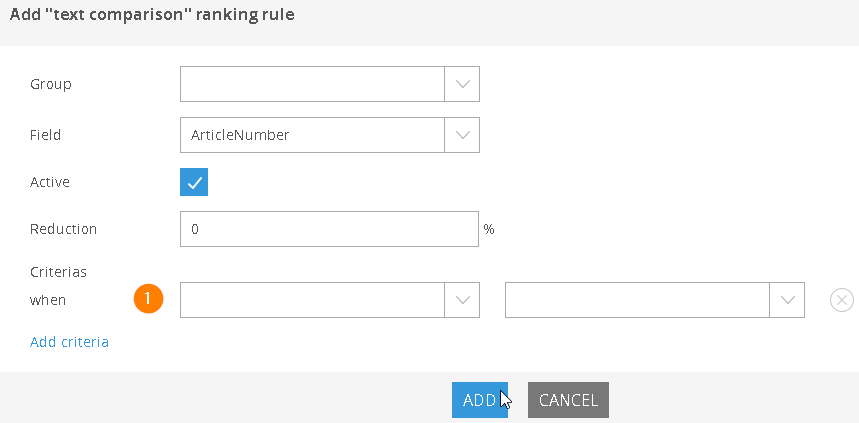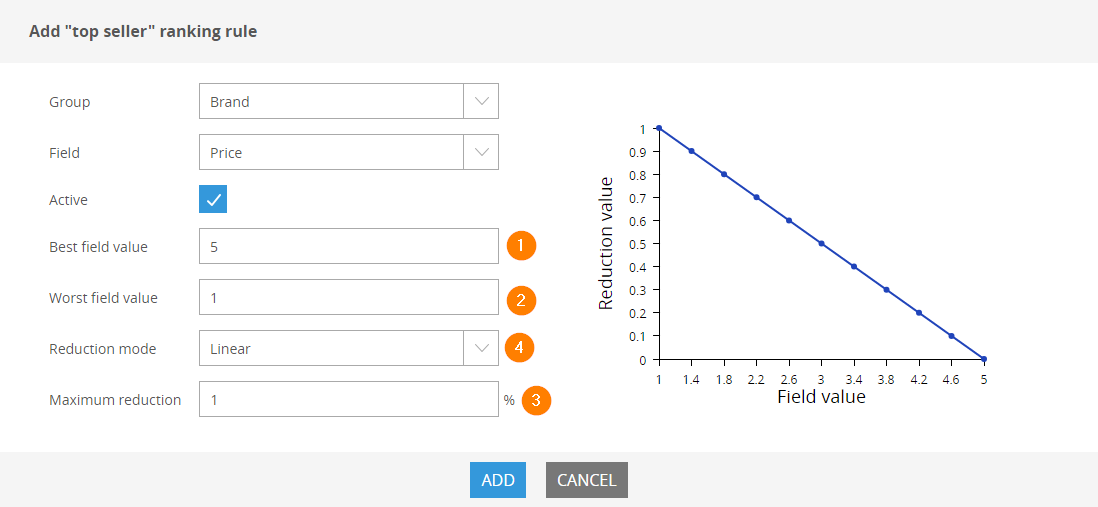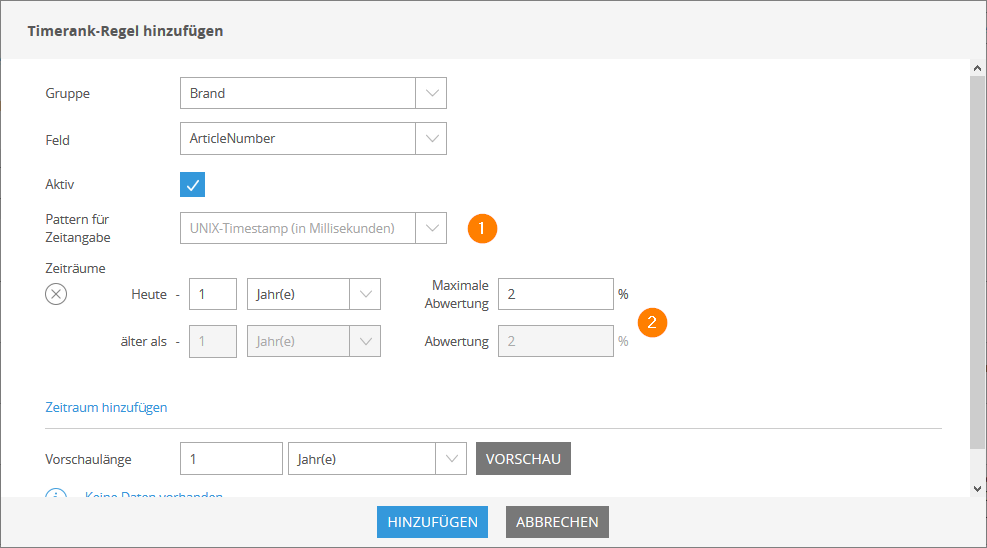Available Ranking Rules
The following Ranking rules can be applied:
Text comparison
The text comparison condition compares the content of the specified field with a given criterion. If a match occurs, the similarity value of the matching record is reduced accordingly.
You can use the operators equals / not equals, contains / not contains or is empty / is not empty. (1)
If a rule should for example be applicable to various brands, then add additional conditions by clicking on Add Condition. FACT-Finder will internally combine both conditions with the OR operator. If you want to make sure that all terms found must be present, write them into a condition in the correct order.
Topseller
The top seller condition is used for numerical fields and allows for a linear, logarithmic or step by step graded weighting.
If the record has the specified top value (1) or better, no reduction is applied. If it has the specified flop value (2) or worse, the maximum reduction (3) is applied. All values in between are assigned a reduction on a linear scale by default. So values in the middle between the top value and the flop value will be assigned half of the reduction and so on.
Aside from that you can also choose a logarithmic or a step-by-step reduction (4).
Time Rank
Time rank conditions allow you to reduce the similarity value of records on the basis of a date or time range.
If you want to use this condition type you must ensure that a corresponding date field (for example, the creation date) is present in your data. FACT-Finder will check the current date during the import and calculate the difference.
As with the topseller ranking rule, you define a range within which a linear reduction is applied.
You can not only choose a pattern (1), a UNIX timestamp or a date format (yyyy/mm/dd) of the date, but also define the timeframe (2). The value reduction happens linearly within the period. By choosing a different unit than days you automatically create calendar friendly steps. If you devalue by 1% over 4 weeks, a value reduction is made every 7 days.
Another difference in comparison with the Bestseller ranking is the fact that the reference is not a fixed range of figures, but always the current date.
Define multiple timeframes to set an exponential reduction rule. It's also possible to create steps by switching between timeframes: 1-13 days of 0,001% reduction, 14 days 1% reduction. For the first 13 days, hardly anything happens, then a noticeable drop starts.
the different timeframes available enable you to choose exactly, how the reduction happens: choose days for a daily, linear decrease, weeks for a weekly reduction and so on.


